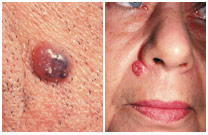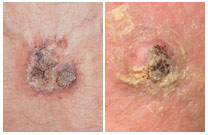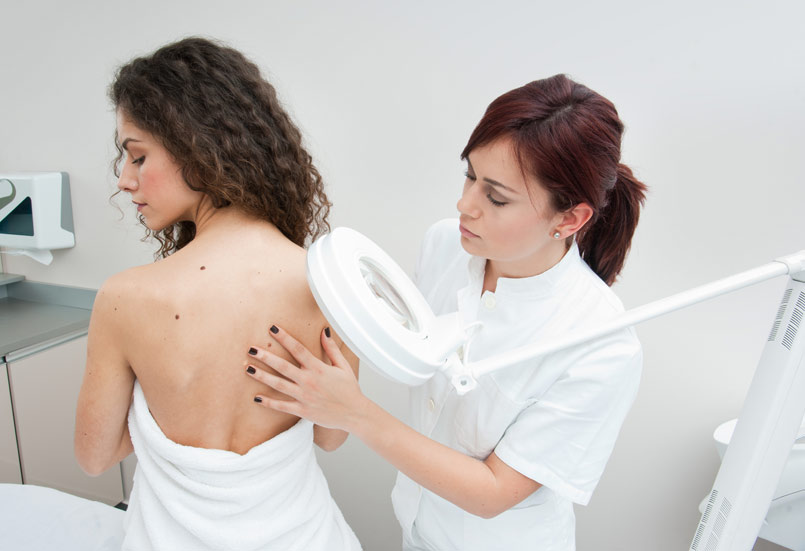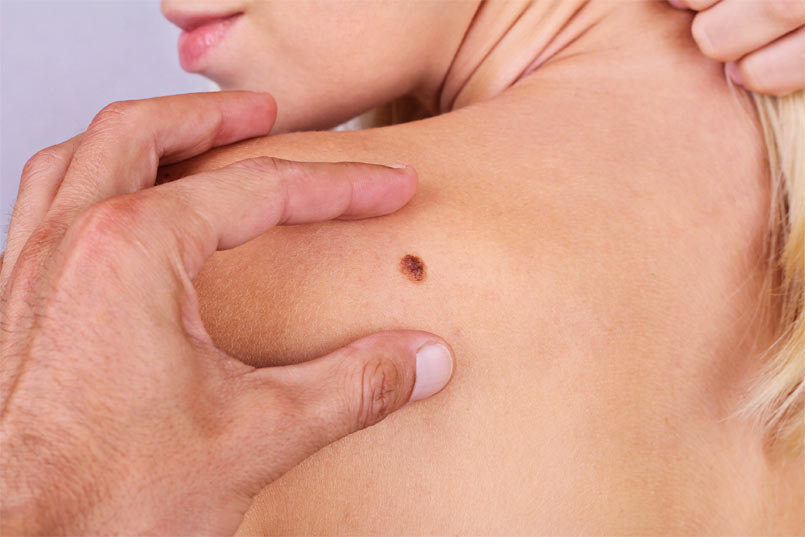Learn The Warning Signs of Skin Cancer!
Checking yourself for skin cancer often is one of the most important steps you can take to protect yourself against the harmful effects of the disease. The earlier the disease is spotted and diagnosed, the better the patient’s chances of a complete recovery with minimal scarring. Because skin cancer can resemble a number of different skin conditions, it is important to know what to look for while performing a self-check. Below are some common characteristics of the three major types of skin cancer.
 Basal cell carcinoma- Often presents as an open sore that bleeds or crusts over, appears to heal, and then reopens for seemingly no reason. Basal cell carcinomas may also look like a shiny pink or brown mole, or a reddish sore that is indented in the middle.
Basal cell carcinoma- Often presents as an open sore that bleeds or crusts over, appears to heal, and then reopens for seemingly no reason. Basal cell carcinomas may also look like a shiny pink or brown mole, or a reddish sore that is indented in the middle.
http://www.skincancer.org/skin-cancer-information/basal-cell-carcinoma/the-five-warning-signs-images#panel1-4
 Squamous cell carcinoma- Usually appears as a bump or wart-like growth that repeatedly opens and crusts over. Look for bumps that are scaly in appearance and have inconsistently defined borders.
Squamous cell carcinoma- Usually appears as a bump or wart-like growth that repeatedly opens and crusts over. Look for bumps that are scaly in appearance and have inconsistently defined borders.
http://www.skincancer.org/skin-cancer-information/squamous-cell-carcinoma/scc-warning-signs-and-images

Melanoma- Commonly appears as an irregularly shaped or colored mole. If you have a single mole that is different in size or color than other moles on your body, it could be a sign of melanoma. Because melanomas are so dangerous, a guide known as “the ABCDEs of melanoma” has been developed to help people identify possible cases.
- Asymmetry: Melanomas are often asymmetrical. If your mole looks different on one side than it does on the other, it could be cause for concern.
- Border: If the border of your mole is irregularly defined, or has notches and jagged edges, you should get it checked out.
- Color: If the color of your mole is not consistent throughout, and parts of it are darker or lighter than others, it could be a sign of melanoma.
- Diameter: Melanomas are usually larger than normal moles. If your mole is larger than the size of a pencil eraser, consult with your skin-care professional.
- Evolving: Normal moles and birthmarks will look very much the same as time progresses. If you notice a mole that is evolving and changing in size, shape, or color, please make an appointment to determine if it is cancerous.
The above list of warning signs is not comprehensive and only a doctor can determine for sure if your condition is skin cancer. If your skin develops any of these symptoms or other irregularities, growths, or discolorations, seek the opinion of a skin-care professional immediately.
Previous – Mohs Surgery Series Part 1 – Causes of skin cancer
Next – Mohs Surgery Series Part 3 – I think I have a skin cancer, what do I do now?






